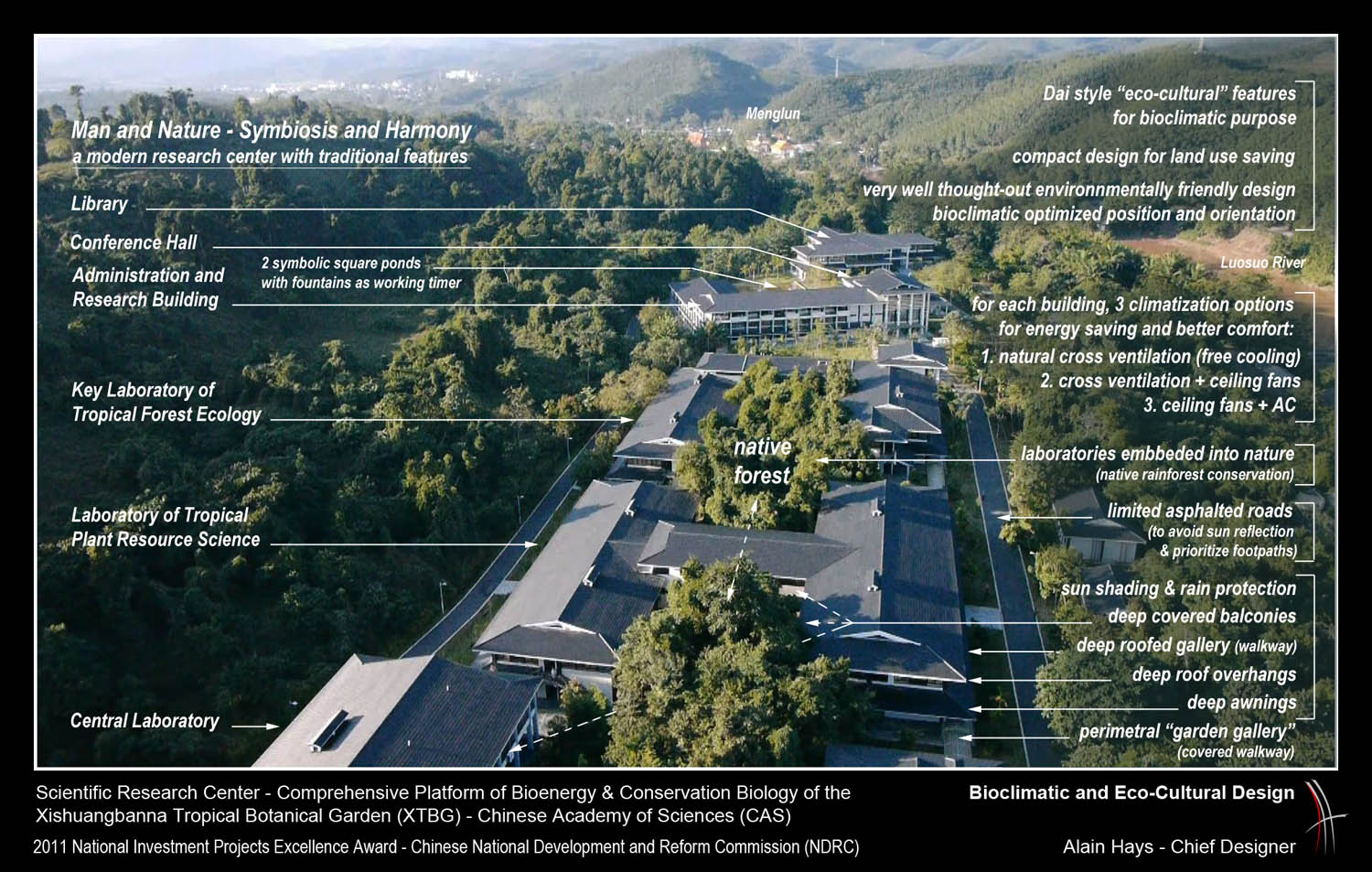“Eco-culture” is timeless; it means any form of human culture that may demonstrate a strong ability to protect nature. Eco-culture invites us to preserve its material as well as immaterial legacy — in particular its environmentally friendly built heritage — what contributes to ecosystem conservation efforts.
The design and building of the new scientific research center of Xishuangbanna Tropical Botanical Garden (XTBG) of the Chinese Academy of Sciences (CAS) is a valuable experience argues for an innovative eco-cultural approach.
The design and building of XTBG new scientific research center and the conservation issue of its unique natural and cultural environment, the native rain forest and the Dai and Hani/Akha built heritage, is an example to help people to better understand what this new "eco-cultural" concept means in practice.
The new XTBG scientific research center design is the result of an "eco-cultural" concept which respects the native forest on the building site and expresses local cultural values in a modern friendly and functional way. During the design process, landscaping (especially plants and trees) was not considered as a final embellishment, a simple decor as it is usual, but also was entirely part of the architectural and bioclimatic design.
It did not follow the usual Chinese construction pattern: “remove all and level down, then construct the buildings and rebuild the landscape”. On the contrary, the project made the most of the natural shape and slopes of the terrain and the original plants were preserved all around the buildings during the construction work. The building process was a little more complicated but the result was worth it. Surrounded by the preserved forest, the new buildings, including the laboratories, were “instantly” integrated into nature and the environment, giving a soul to the research center and promoting a sense of having always existed in this outstanding place.
A new paper entitled “Eco-cultural” Perspectives for Green Building Design and Built Heritage Conservation” , written and illustrated by Alain Hays, chief designer of the XTBG Research Center, was recently published on the web by the “Franco-Chinese Association for Sustainable Urban Development” (AFCDUD).
On request of AFCDUD, this document was written as a follow up to the 2016 and 2017 Alain Hays papers respectively untitled: “Xishuangbanna World Botanical and Eco-Cultural Heritage” and “Menglun Eco-Cultural Development and Dai Building Heritage”. This new paper highlights the innovative “eco-cultural” experience of the XTBG Research Center design process and construction. It synthesizes the “green building” issue for the natural and cultural environment of XTBG and proposes some guidelines about it.
In addition, this document helps to put XTBG and its outstanding environment on the World Natural and Cultural Heritage map.
For more information, please read the document “Eco-cultural” Perspectives for Green Building Design and Built Heritage Conservation.


